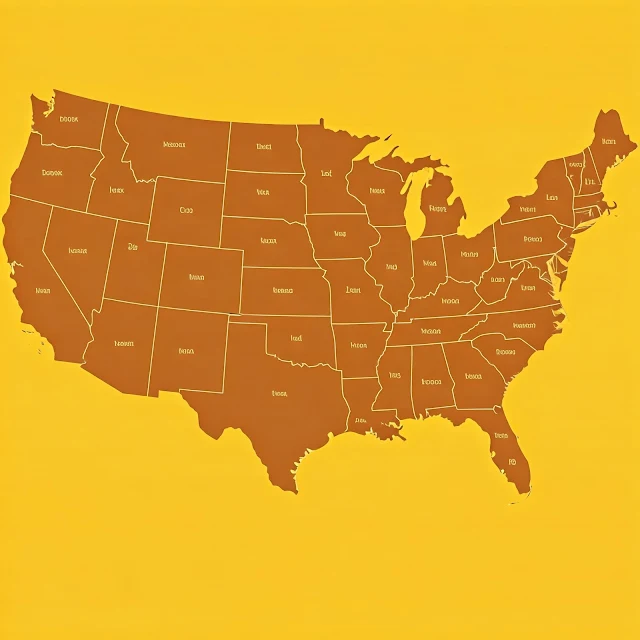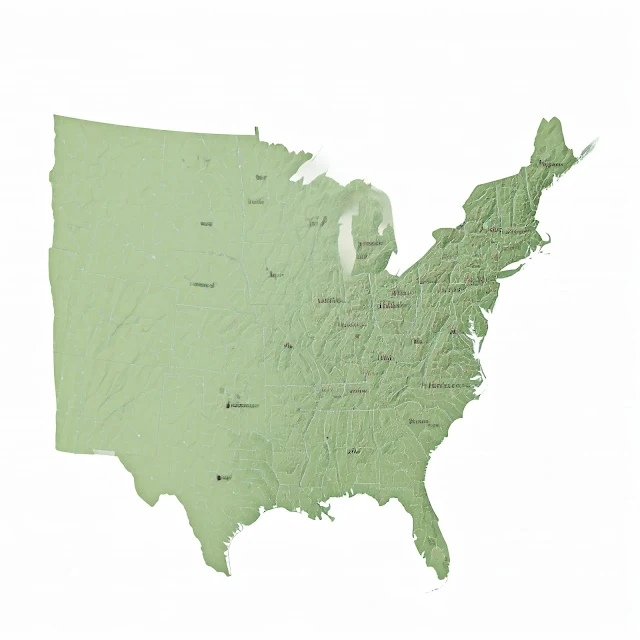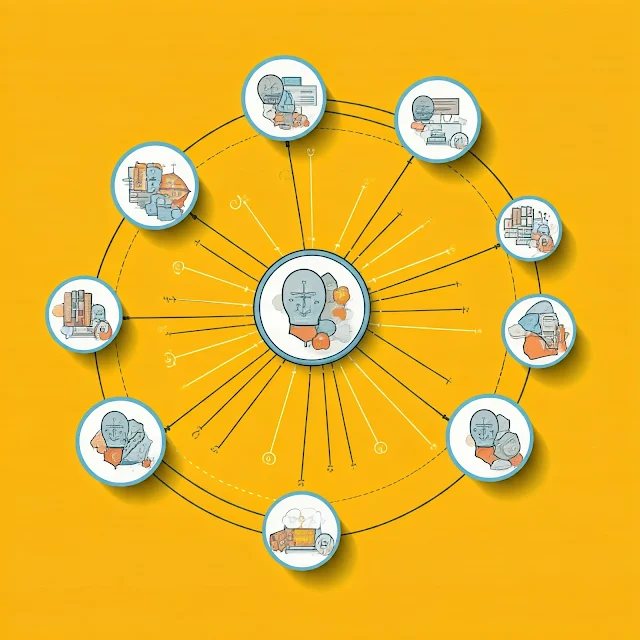Federal System: A Comparative Overview
Federalism is a system of government in which power is divided between a central authority and constituent units. This division of power helps to balance local needs with national interests, ensuring a more equitable and responsive governance.
Key Characteristics of Federal Systems
| Feature | Description |
|---|---|
| Shared Sovereignty | Both the central government and the constituent units possess their own sovereignty and authority within their respective spheres. |
| Written Constitution | A written constitution outlines the powers and responsibilities of each level of government, ensuring a clear division of authority. |
| Multiple Levels of Government | Federal systems typically consist of a national government, state or provincial governments, and local governments. |
| Independent Judiciary | A strong and independent judiciary is essential to interpret the constitution and resolve disputes between different levels of government. |
| Direct Representation | Citizens have the right to vote directly for representatives at both the national and subnational levels. |
| Federalism is a system of government in which power is divided between a central authority and constituent units. |
Key Characteristics of Federal Systems
- Shared Sovereignty: Both the central government and the constituent units possess their own sovereignty and authority within their respective spheres.
- Written Constitution: A written constitution outlines the powers and responsibilities of each level of government, ensuring a clear division of authority.
- Multiple Levels of Government: Federal systems typically consist of a national government, state or provincial governments, and local governments.
- Independent Judiciary: A strong and independent judiciary is essential to interpret the constitution and resolve disputes between different levels of government.
- Direct Representation: Citizens have the right to vote directly for representatives at both the national and subnational levels.
Comparison of Federal Systems
| Feature | United States | Canada | Australia | Brazil | India |
|---|---|---|---|---|---|
| Type of Federalism | Cooperative Federalism | Cooperative Federalism | Cooperative Federalism | Cooperative Federalism | Asymmetrical Federalism |
| Central Government Powers | Relatively strong | Relatively strong | Relatively strong | Relatively strong | Relatively weak |
| State/Provincial Powers | Significant | Significant | Significant | Significant | Varying |
| Local Government Powers | Limited | Limited | Limited | Limited | Varying |
| Constitutional Framework | U.S. Constitution | Canadian Charter of Rights and Freedoms | Australian Constitution | Brazilian Constitution | Indian Constitution |
Advantages and Disadvantages of Federalism
Advantages
- Checks and Balances: Federalism prevents the concentration of power and ensures that different levels of government can check each other.
- Local Responsiveness: Local governments can better address the unique needs and concerns of their constituents.
- Experimentation: States or provinces can experiment with different policies and programs, allowing for innovation and learning.
- Protection of Minority Rights: Federalism can protect the rights of minority groups by ensuring that they have a voice in government.
Disadvantages
- Inefficiency: Federalism can lead to duplication of services and inefficiencies in government.
- Lack of Accountability: It can be difficult to assign responsibility for problems that arise at multiple levels of government.
- Regionalism: Federalism can sometimes lead to regional divisions and conflicts.
- Complexity: The complexity of federal systems can make it difficult for citizens to understand and participate in government.
In conclusion, federalism is a complex system of government with both advantages and disadvantages. While it can provide for a more responsive and equitable governance, it also presents challenges in terms of efficiency, accountability, and regionalism. The success of a federal system depends on the ability of its constituent units to work together effectively and balance their own interests with the broader national good.
Shared Sovereignty: A Cornerstone of Federalism
Shared sovereignty is a fundamental principle in federal systems of government. It implies that both the central government and the constituent units (such as states or provinces) possess their own sovereignty and authority within their respective spheres. This concept is essential to the functioning of federalism, as it ensures a balance of power and prevents the concentration of authority in a single entity.
Key Implications of Shared Sovereignty:
- Division of Powers: The constitution of a federal system outlines the powers and responsibilities of each level of government. This division helps to prevent the central government from becoming too powerful and ensure that local needs are addressed.
- Mutual Respect: Both the central government and the constituent units must respect each other's authority and work together to achieve common goals.
- Checks and Balances: Shared sovereignty creates a system of checks and balances, where each level of government can limit the power of the other.
- Flexibility: Shared sovereignty allows for flexibility in governance, as it enables the central government and the constituent units to adapt to changing circumstances.
Examples of Shared Sovereignty in Federal Systems:
- United States: The U.S. Constitution outlines the powers of the federal government and the states. For example, the federal government has the power to regulate interstate commerce, while states have the power to regulate intrastate commerce.
- Canada: The Canadian Constitution divides powers between the federal government and the provinces. The federal government has exclusive jurisdiction over matters such as defense, foreign affairs, and criminal law, while the provinces have jurisdiction over matters such as education, healthcare, and natural resources.
- Australia: The Australian Constitution divides powers between the Commonwealth government and the states. The Commonwealth government has exclusive jurisdiction over matters such as external affairs, defense, and customs, while the states have jurisdiction over matters such as education, health, and law and order.
Shared sovereignty is a vital component of federal systems, ensuring a balance of power, flexibility, and effective governance. By recognizing the sovereignty of both the central government and the constituent units, federal systems can promote a more democratic and responsive form of government.
Written Constitution: The Blueprint of Federalism
A written constitution is a fundamental document that outlines the structure, powers, and responsibilities of a government. In federal systems, the written constitution serves as the cornerstone for establishing the division of powers between the central government and the constituent units.
Key Functions of a Written Constitution in Federal Systems:
- Defining the Structure of Government: The constitution specifies the branches of government (legislative, executive, and judicial), their roles, and the relationships between them.
- Enumerating Powers: The constitution lists the specific powers granted to the central government and the constituent units. This prevents the concentration of power in one level of government and ensures a balance of authority.
- Protecting Rights: The constitution often includes a bill of rights or similar provisions that guarantee the fundamental rights of citizens. These rights are protected from infringement by both the central government and the constituent units.
- Providing a Framework for Governance: The constitution establishes the rules and procedures for governing the country. It outlines how laws are made, how elections are conducted, and how disputes are resolved.
- Serving as a Source of Legitimacy: The constitution is often seen as a symbol of the nation's values and principles. It provides a sense of legitimacy and unity to the government.
Examples of Written Constitutions in Federal Systems:
- United States Constitution: This document is considered one of the most influential constitutions in history. It establishes the structure of the U.S. government, outlines the powers of the federal government and the states, and protects the rights of citizens.
- Canadian Charter of Rights and Freedoms: While Canada does not have a single written constitution, the Charter is a fundamental law that guarantees the rights and freedoms of Canadians. It is considered a key component of the Canadian federal system.
- Australian Constitution: This document establishes the structure of the Australian government and outlines the powers of the Commonwealth government and the states. It also includes a bill of rights that protects the fundamental rights of Australians.
The written constitution is an essential component of any federal system. It provides a clear framework for governance, protects the rights of citizens, and ensures a balance of power between the central government and the constituent units.
Multiple Levels of Government: A Cornerstone of Federalism
Multiple levels of government are a defining characteristic of federal systems. This structure involves the coexistence of different tiers of government, each with its own authority and responsibilities. This division of power helps to balance local needs with national interests, ensuring a more responsive and efficient governance.
Key Levels of Government in Federal Systems:
- National Government: This is the highest level of government, responsible for overseeing the country as a whole. It typically has jurisdiction over matters such as defense, foreign policy, and interstate commerce.
- State or Provincial Governments: These are subnational governments that have authority over specific regions or states within the country. They often have jurisdiction over matters such as education, healthcare, and environmental regulations.
- Local Governments: These are the most localized level of government, responsible for governing cities, towns, and other smaller administrative units. They typically have jurisdiction over matters such as zoning, public safety, and waste management.
Advantages of Multiple Levels of Government:
- Local Responsiveness: Local governments can better address the unique needs and concerns of their constituents.
- Checks and Balances: The existence of multiple levels of government helps to prevent the concentration of power and ensures that different interests are represented.
- Experimentation: States or provinces can experiment with different policies and programs, allowing for innovation and learning.
- Protection of Minority Rights: Multiple levels of government can protect the rights of minority groups by ensuring that they have a voice in government.
Challenges of Multiple Levels of Government:
- Inefficiency: The complexity of multiple levels of government can sometimes lead to duplication of services and inefficiencies.
- Lack of Accountability: It can be difficult to assign responsibility for problems that arise at multiple levels of government.
- Regionalism: Multiple levels of government can sometimes lead to regional divisions and conflicts.
- Complexity: The complexity of federal systems can make it difficult for citizens to understand and participate in government.
Despite these challenges, the existence of multiple levels of government is a fundamental feature of federal systems. It provides a balance of power, ensures local responsiveness, and promotes a more democratic and participatory form of governance.
Independent Judiciary: A Pillar of Federalism
An independent judiciary is a crucial component of federal systems. It refers to a system of courts that are free from undue influence from the executive and legislative branches of government. This independence is essential to ensuring the rule of law, protecting individual rights, and maintaining a balance of power within the federal system.
Key Characteristics of an Independent Judiciary:
- Separation of Powers: The judiciary should be separate from the executive and legislative branches to prevent conflicts of interest and ensure impartiality.
- Tenure Security: Judges should have secure tenure, meaning they cannot be easily removed from office for political reasons. This protects their independence and allows them to make decisions without fear of reprisal.
- Judicial Review: The judiciary should have the power to review the actions of the executive and legislative branches and declare them unconstitutional if they violate the law. This power helps to prevent the abuse of power by government officials.
- Fair Procedures: The judiciary should ensure that all individuals are treated fairly in the legal process. This includes providing access to legal representation, ensuring a speedy trial, and protecting the rights of the accused.
Importance of an Independent Judiciary in Federal Systems:
- Rule of Law: An independent judiciary is essential for upholding the rule of law, which means that everyone is subject to the same laws and that no one is above the law.
- Protection of Rights: The judiciary plays a crucial role in protecting the rights of individuals, including the right to due process, freedom of speech, and freedom of assembly.
- Checks and Balances: An independent judiciary can act as a check on the power of the executive and legislative branches, preventing the concentration of power and ensuring that the government acts within the bounds of the law.
- Public Confidence: A strong and independent judiciary is essential for maintaining public confidence in the government and the legal system.
In conclusion, an independent judiciary is a vital pillar of federal systems. It ensures the rule of law, protects individual rights, and maintains a balance of power within the government. By upholding these principles, an independent judiciary contributes to a just and equitable society.
Frequently Asked Questions about Federal Systems
General Questions
1. What is federalism?
Federalism is a system of government in which power is divided between a central authority and constituent units (such as states or provinces).
2. What are the key characteristics of federal systems? Key characteristics include shared sovereignty, a written constitution, multiple levels of government, an independent judiciary, and direct representation.
3. What are the advantages of federalism? Advantages include checks and balances, local responsiveness, experimentation, and protection of minority rights.
4. What are the disadvantages of federalism? Disadvantages include inefficiency, lack of accountability, regionalism, and complexity.
Specific Questions
5. How does federalism differ from unitary and confederal systems?
- Unitary systems: Power is concentrated in the central government.
- Federal systems: Power is shared between the central government and constituent units.
- Confederal systems: Power is primarily held by the constituent units, with a weak central government.
6. What is the role of the central government in a federal system? The central government typically has jurisdiction over matters such as national defense, foreign policy, and interstate commerce.
7. What is the role of state or provincial governments in a federal system? State or provincial governments have authority over specific regions or states within the country. They often have jurisdiction over matters such as education, healthcare, and environmental regulations.
8. What is the role of local governments in a federal system? Local governments are responsible for governing cities, towns, and other smaller administrative units. They typically have jurisdiction over matters such as zoning, public safety, and waste management.
9. How does federalism affect the relationship between the central government and the constituent units? Federalism creates a balance of power between the central government and the constituent units, ensuring that neither level of government becomes too dominant.
10. How does federalism impact the rights of citizens? Federalism can both protect and limit the rights of citizens. It can protect rights by ensuring that they are not infringed upon by the central government, but it can also limit rights by allowing state or provincial governments to enact laws that may be inconsistent with national standards.
29 Terms Related to Federal Systems
| Term | Definition |
|---|---|
| Federalism | The system of government where power is divided between a central authority and constituent units. |
| Central Government | The national government or federal government that oversees the entire country. |
| Constituent Units | States, provinces, or territories that make up the federal system. |
| Shared Sovereignty | The concept that both the central government and the constituent units possess their own sovereignty and authority. |
| Written Constitution | A document that outlines the structure, powers, and responsibilities of the government and its constituent units. |
| Multiple Levels of Government | The existence of different tiers of government, such as national, state/provincial, and local. |
| Independent Judiciary | A judicial branch that is separate from the executive and legislative branches and has the power to interpret the constitution. |
| Direct Representation | Citizens have the right to vote directly for representatives at both the national and subnational levels. |
| Cooperative Federalism | A type of federalism where the central government and the constituent units work together to achieve common goals. |
| Dual Federalism | A type of federalism where the central government and the constituent units have distinct and separate powers. |
| Asymmetrical Federalism | A type of federalism where the constituent units have different levels of power and autonomy. |
| Enumerated Powers | Powers specifically granted to the central government in the constitution. |
| Reserved Powers | Powers not explicitly granted to the central government and therefore reserved for the constituent units. |
| Concurrent Powers | Powers that can be exercised by both the central government and the constituent units. |
| Supremacy Clause | A clause in the constitution that declares federal law to be supreme over state law. |
| Necessary and Proper Clause | A clause in the constitution that grants the central government the power to make laws that are necessary and proper to carry out its enumerated powers. |
| Intergovernmental Relations | The interactions and relationships between different levels of government. |
| Federal Grants | Financial assistance provided by the central government to the constituent units. |
| Mandates | Requirements imposed by the central government on the constituent units. |
| Devolution | The transfer of power and authority from the central government to the constituent units. |
| Centralization | The concentration of power in the central government. |
| Regionalism | The development of strong regional identities and interests. |
| Fiscal Federalism | The study of how government finances are divided between different levels of government. |
| Social Federalism | The role of government in promoting social welfare and equality. |
| Economic Federalism | The role of government in regulating the economy and promoting economic growth. |
| Federalism vs. Unitarism | The comparison between federal systems and unitary systems, where power is concentrated in the central government. |
| Federalism vs. Confederalism | The comparison between federal systems and confederal systems, where power is primarily held by the constituent units. |
| Comparative Federalism | The study of federal systems in different countries and regions. |







